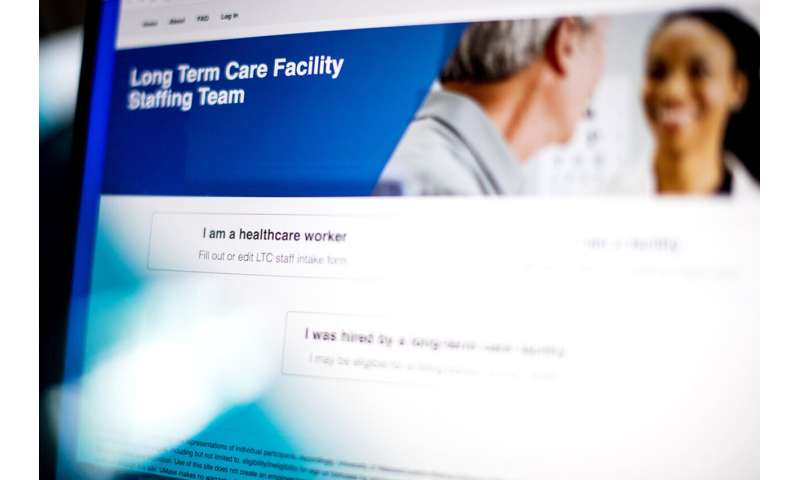
Long-term care facilities have become a flashpoint in the COVID-19 pandemic, with high infection rates and low staffing exacerbated by the demands of the pandemic. Facilities with COVID-19 patients have been struggling even more to hire qualified staff, fast.
With more than 500 long-term care facilities in Massachusetts, the hiring process can be a struggle—facilities need to sort through candidates to find the best fit, and applicants have to apply to each job individually. Ozlem Ergun, a professor of mechanical and industrial engineering, and her doctoral students joined a team to make the process more efficient.
Ergun and her students created an algorithm that pairs healthcare workers with open positions at long-term care facilities that have COVID-19 patients—a process that cuts down on the time it takes to sort through applicants when facilities are pressed for staff.
Think of the project as a delivery truck. The algorithm Ergun and her students built is the engine, and a website, built by a team of researchers from the University of Massachusetts Medical School, is the chassis.
In addition to researchers from Northeastern and UMass, officials from the Massachusetts Executive Office of Elder Affairs coordinated the effort.
Ergun’s team created the algorithm and got it up and running in under a week—no small task.
“I think in terms of fast, this is preposterous,” Ergun says. “I’ve never been in a situation like this where I had to get something up in several days, and then operationally run it every single day. It’s crazy.”
Here’s how it works.
The facilities submit the positions they need filled as well as the requirements for each position on the website. At the same time, applicants submit their credentials and availability. The algorithm sorts through applicant profiles to find the candidates that are the best fit for each position. Then, once the applicant is matched with a facility, officials from that facility interview the candidate before officially hiring them.
Each day, the Massachusetts Department of Public Health sends a list of facilities that are most urgently in need of staff to Ergun and her students. Then, they manually adjust the algorithm so those facilities are matched with staff first.
On any given day, the algorithm matches between 300 and 1,000 applicants to jobs, Ergun says. A few days, that number has reached over 1,000.
The website also serves to show state officials in cold, hard data, the disparity between the number of available medical workers and the number of open positions at facilities. There are too few healthcare workers to meet the demand, and staffing a high number of facilities is a challenge.
Source: Read Full Article





